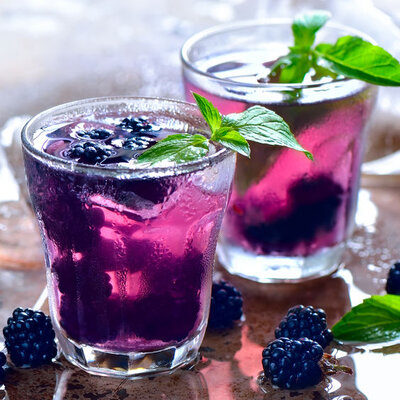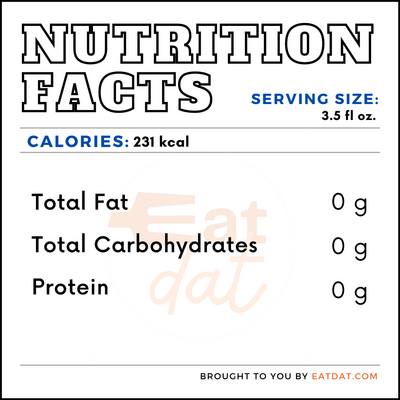
Blue Raspberry Vodka
What is Blue Raspberry Vodka?
Blue raspberry vodka is a variety of vodka flavored with blue raspberry (Rubus leucodermis). It is a common base for alcoholic beverages, although it shouldn’t be confused with the Blue Curaçao liquor. This alcoholic beverage has a bright blue color with a sweet and tangy taste.
The top 10 most popular flavored vodka brands are:
- Absolut Citron
- Ketel One Cucumber & Mint
- Hanson of Sonoma Habanero
- Ketel One Citroen
- Finlandia Grapefruit
- Effen Blood Orange
- Ketel One Grapefruit & Rose
- Ciroc Peach
- St. George’s Green Chile
- Finlandia Cranberry
Origin of blue raspberry vodka
Vodka’s origins date back to the 8th or 9th century in Poland and Russia. However, blue raspberries are native to North America, and are also referred to as the whitebark raspberry. Legend has it that in 1958, the blue raspberry flavor gained popularity due to the brand Gold Medal looking to differentiate products with the blue color. Since then, it has become a prevalent flavor in anything from slushies to candies. However, it wasn’t until the 1980s that flavored vodka took off in the United States.
Nutrition
A 3.5 fluid ounce serving of this vodka contains:

Blue raspberry vodka is low in calories when compared to other vodka, which may help minimize weight gain. Studies have shown that this liquor may also relieve stress better than red wine. However, excess consumption of this alcoholic beverage may lead to lowered immunity, sleeping disorders, and other health complications. Even moderate consumption of this liqueur can result in considerable side effects.
Commercial production
The first step in the commercial production of this vodka is mash preparation. Grain is loaded into an automatic mash tub, and then malt meal is added to ensure the proper conversion of starches contained in the grains to sugar. This mash tub breaks down the grain. After that, comes the sterilization step. This stage is crucial to the distillation process, because it helps prevent the growth of bacteria.
Then, the mash grain is transferred into a stainless steel vat for fermentation. Next, yeast is added to the grain then left covered for about 4 days, during which it is converted into ethyl alcohol. The converted alcohol undergoes a distillation process where vapor is collected in another container. Distillation further removes impurities from the drink. Since vodka is usually high proof, around 190 proof, water is added to reduce the alcoholic content to 80 proof. Finally, blue raspberry is added for color and flavor, and the finished vodka is bottled for sale.
Application
To enjoy this liquor to the fullest, you should ensure it is stored properly. While vodka cannot go bad, it does lose its strength and flavor over time. For best results, ensure the cap on the bottle is tightly sealed and store this flavored vodka away from light and heat. Under ideal conditions this drink can last for up to 20 years.
Blue raspberry vodka recipes
This fruit vodka makes a great addition to drinks. Here are some popular recipes
- Homemade Blue Raspberry Vodka
- Blue Raspberry Vodka Lemonade
- Swedish Polar Bear Cocktail
- The Fishbowl
- Cotton Candy Cocktail
FDA Regulation
Alcoholic beverages are regulated by the TTB (Alcohol and Tobacco Tax and Trade Bureau) in the US. There are no specific regulations for blue raspberry vodka. However, vodka is defined as a neutral spirit distilled with charcoal and without any distinctive character, aroma, taste, or color. The TTB strictly regulates the production and import of this alcohol, which must have 95 percent ABV and be bottled at no less than 40 percent ABV. Distilled liquor should follow the FDA’s labeling procedure, which requests that the drink’s alcohol percentage and its predominant flavor must be adequately labeled.
References
“Vodka: Beverage.” Eat Dat, Eat Dat, 22 July 2020, www.eatdat.com/beverage/vodka/.
Brennan, Dan. “Vodka: Is It Good for You? Pros and Cons, Nutrition, and More.” WebMD, WebMD, 22 Oct. 2020, www.webmd.com/diet/vodka-health-benefits#2.
Memorandum of Understanding Between The Bureau of Alcohol, Tobacco, and Firearms And The Food and Drug Administration “Distilled Spirits.” U.S. Food and Drug Administration, FDA, www.fda.gov/about-fda/domestic-mous/distilled-spirits.
